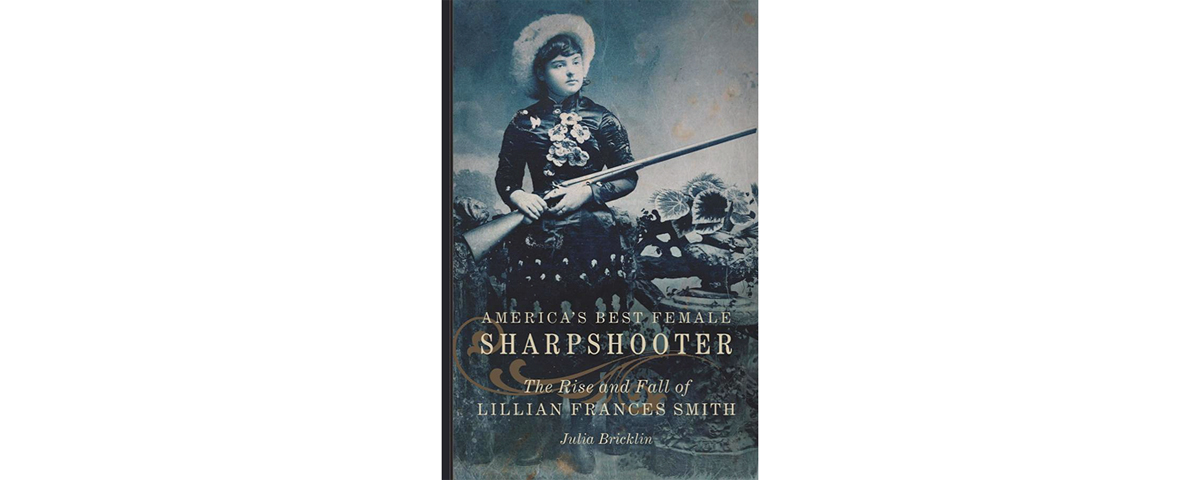America’s Best Female Sharpshooter: The Rise and Fall of Lillian Frances Smith, by Julia Bricklin, University of Oklahoma Press, Norman, 2017, $24.95
What? You were expecting Annie Oakley? Certainly Oakley is the most famous female sharpshooter to ever break thrown glass balls in midair and hit other targets in those turn-of-the-century Western extravaganzas epitomized by Buffalo Bill Cody’s Wild West. Relatively little has been written about California girl Smith, certainly when compared to the many articles and books about Ohio native Oakley, although author Julia Bricklin contributed “The On-Target ‘California Girl’” to the February 2015 issue of Wild West (yet even then Annie made the cover). Much of the ink Smith did receive in 19th-century newspapers came when she and Oakley were fellow performers in Cody’s Wild West, making an especially headline-worthy impression during the May 1887 show in Britain before Queen Victoria herself. The Washington Post diplomatically reported the two little sharpshooters were “equally successful.”
After dazzling royalty, however, Oakley remained in the limelight, while Smith, the “foil for Annie,” faded. Part of the reason was that while Annie had established an all-American girl image, Lillian bucked convention (notably with her weight, alleged drinking problems and supposed difficulty holding onto husbands/lovers). “Certainly Annie Oakley felt threatened professionally by Lillian Smith,” Bricklin writes. “Personally, she could not stand the sight of her.” In one catty diary entry Oakley notes show organizers had cut Smith’s salary after “they saw both her work and her ample figure.”
Actual ability with firearms had nothing to do with why Oakley became a legend in her own time while Smith was nearly forgotten. Bricklin declares straight out in her introduction, “What few people acknowledged was that she [Smith] was actually the best female shot in America, better even than legendary Annie Oakley.” The author doesn’t intend to short change Oakley but points out she had a strong marriage to Frank Butler, who was also “one of the best agents and managers of his time.” Smith, though her skill, pluck and skill excited the crowds, had a far less stable image, what with a family that, according to Bricklin, exploited her, and a variety of male companions (“Jim Kidd” Willoughby, “California Frank” Hafley, Wayne A. Beasley, William Eagle Shirt and painter Emil Lenders among them).
Perhaps the most intriguing aspect of Smith’s story is not that she was such a fine trick shooter, but that she was able to bolster her career and enjoyment of life by later transforming herself into a faux Sioux princess named Wenona. In her new identity as an American Indian (often clad in buckskin tunics and occasionally a headdress) she continued to display her “markswomanship” in a variety of shows, including those put on by the Miller Brothers 101 Ranch of Ponca City, Okla. Mounted shooting became the specialty of the “rehabilitated” native, the “Winsome Wonder Shot of the World.” Among the world records Smith/Wenona set (and in some cases still holds) was “from the back of a running horse…[breaking] 71 of 72 balls thrown in the air.” She died in 1930, four years after rival Oakley.
—Editor





